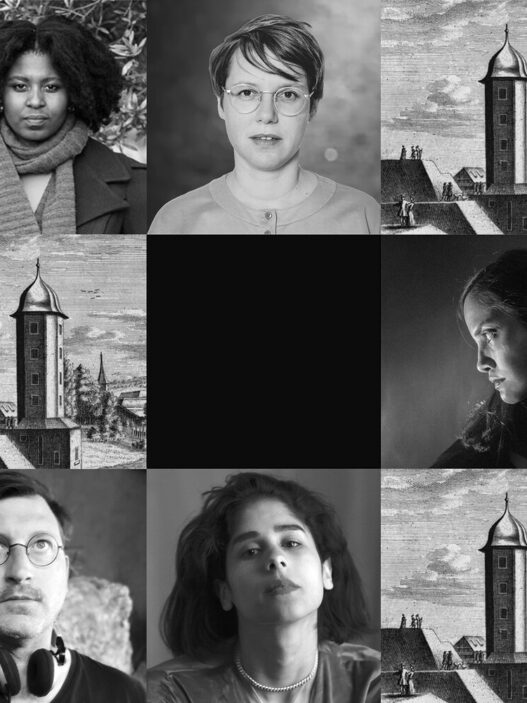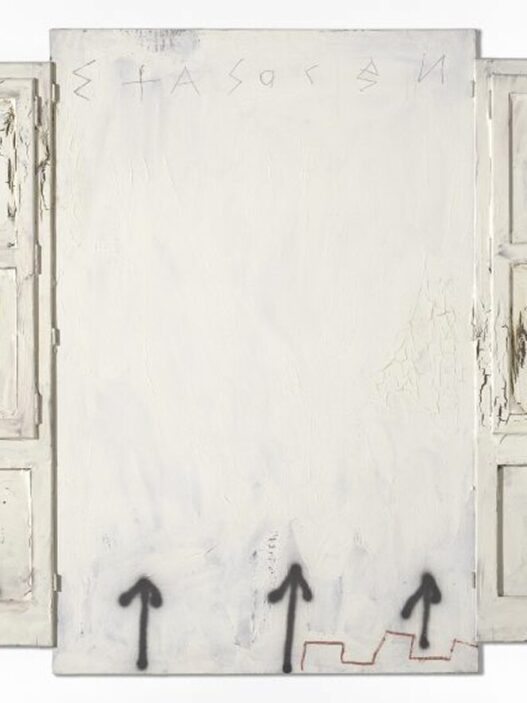October 22, 2022–January 22, 2023
One of the most significant filmmakers in the world is Trinh T. Minh-ha. Since the beginning of the 1980s, she has been creating a body of work that is regarded important for postcolonial and feminist perspectives in both artistic and scholarly contexts.
The Ocean In A Drop, the Württembergischer Kunstverein Stuttgart’s first full solo exhibition by the Berkley-San Francisco-based artist, whose work encompasses musical compositions, poetry, and literature, will be on display from October 22, 2022, until January 22, 2023.
Trinh explores the liminal spaces between fact and fiction, theory and art, and the auditory and visible. Her award-winning films, which were primarily shot in diverse regions of Africa and Asia, give a multidimensional, polyphonic portrait of the locals there, including their cultures, living arrangements, and political circumstances. The exhibition’s title alludes to the political and lyrical forces present in her films, particularly in the unnoticed, unheroic, and marginalized elements of daily life. Trinh’s films are intricate and yet, they remain simultaneously open in their narratives, interweaving a wealth of elements—music, language, and imagery, silence and vacuity, her own texts and those of others, or materials from various times and contexts—to create a multivocal and multilayered textured work. Here, the paradoxical, the unexpected, and the seemingly contradictory are the main keys offered by Trinh for arriving at a deeper understanding of the world. Moreover, in her work she has developed a practice of “speaking nearby” (Trinh, as differentiated from speaking “about,” “for” or “on top of”) which allows her to approach foreignness and otherness with intimacy and respect, thus thwarting the colonial gaze. Six distinct, color-coded rooms house six lengthy movies from the 1980s to the present that are shown as part of The Ocean In A Drop. Mini projections, quotations, and collages of film stills are included in the main exhibition area, which is framed by these cinema berths, and they serve as an abstract reflection of the individual works. Additionally, a number of the artist’s publications and related reference books are displayed on tables. The exhibition thus takes place on two planes, simulating the theater and the white cube while simultaneously expanding beyond them.
The contemporaneous video projections enable a somewhat fragmentary, as opposed to linear, perception of the individual pieces, as well as a continuous recombination of the parts that contain the whole—the ocean within each drop—due to the visitors going back and forth between the six berths. This results in ever evolving relationships between the particular films and the theoretical creations of the artist.
Films in the exhibition
What About China?, USA, China 2021, digital film, 135 minutes
(with German subtitles)
Forgetting Vietnam, USA, Vietnam 2015, digital film, 90 minutes
Night Passage, USA 2004, digital film, 98 minutes
Shoot for the Contents, China, USA 1991, digital film (16mm), 102 minutes
Surname Viet Given Name Nam, USA 1989, digital film (16mm), 108 minutes
Naked Spaces – Living Is Round, USA 1985, digital film (16mm), 135 minutes
All films are in English.
About the artist
One of the most significant international advocates for independent film is Trinh T. Minh-ha. Since the early 1980s, she has been creating a theoretical, filmic, and poetic body of work that is regarded as the groundwork for postcolonial and feminist perspectives in both the art and academic contexts, and that has dramatically reshaped the distinctions between fact and fiction.
Trinh immigrated to the US in 1970 while the Vietnam War was still going on. He was born in Hanoi and was reared in Saigon. She spent three years instructing at the National Conservatory of Music and Drama in Dakar, Senegal, starting in 1977, after completing studies in music composition, ethnomusicology, and French literature in Illinois and Paris.
Her publications created together with the photographer and architect Jean-Paul Bourdier go back to this period, such as African Spaces: Designs for Living in Upper Volta (1985), as do her first two 16mm films, Reassemblage (1982) and Naked Spaces—Living Is Round (1985), both produced by Bourdier, who is involved in the organization of all of her filmic projects. From 1992 to 2022 Trinh taught at UC Berkeley in the departments of rhetoric and gender and women’s studies.
Among her most important theoretical-poetic writings are Women, Native, Other (1989), When the Moon Waxes Red (1991), Elsewhere, Within Here (2011), and Lovecidal: Walking with The Disappeared (2016), as well as compilations from interviews, and/or the film scripts in Framer Framed (1992) Cinema Interval (1999), The Digital Film Event (2005) and D-Passage. The Digital Way (2013).
Trinh has received numerous prizes and awards, such as the Wild Dreamer Lifetime Achievement Award of the Subversive Festival 2014 in Zagreb, the Trailblazers Award of the Cannes International Documentary Film Event 2006, and the Best Cinematography Award of the Sundance Film Festival 1992 for the film Shoot for the Contents. Her most recent film, What About China?, was the 2022 recipient of the New Vision: CPH Dox Award, the Prix Bartók of the Jean Rouch Film festival and the prestigious Persistence of Vision Award of the San Francisco International Film Festival.
An exhibition by: Württembergischer Kunstverein Stuttgart, in collaboration with NTU Centre for Contemporary Art Singapore and Rockbund Art Museum Shanghai.
Curators: Hans D. Christ, Iris Dressler
Press and professional preview: October 21, 11am
Opening: October 21, 7pm
Screening and artist talk: October 22, 1pm
Württembergischer Kunstverein Stuttgart
Entrance Stauffenbergstraße
Schlossplatz 2
70173 Stuttgart
Germany
Hours: Tuesday–Sunday 11am–6pm,
Wednesday 11am–8pm
T +49 711 223370
F +49 711 2233791
[email protected]




















